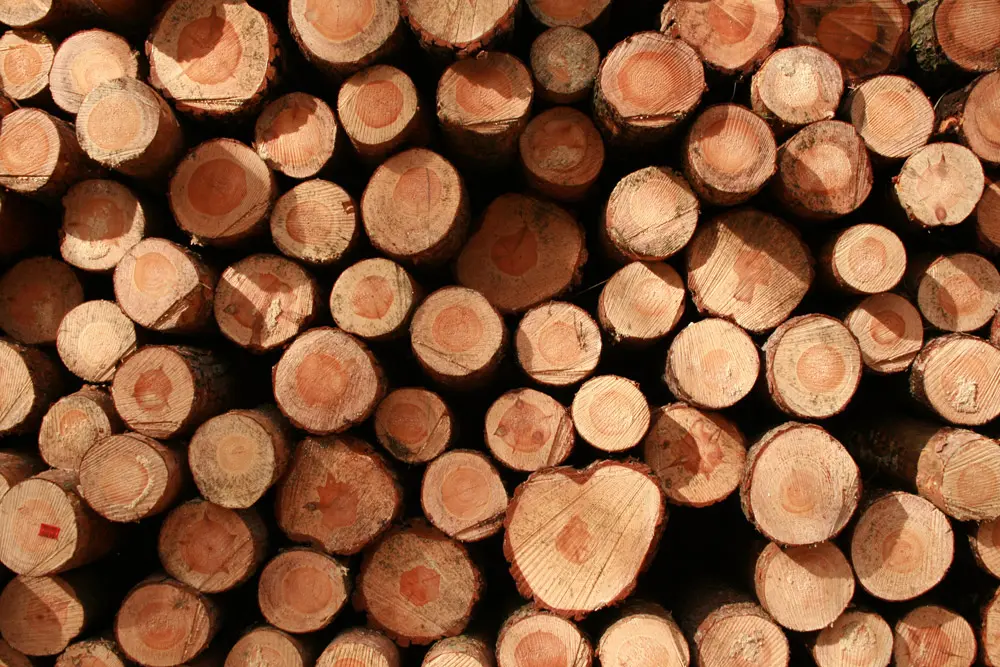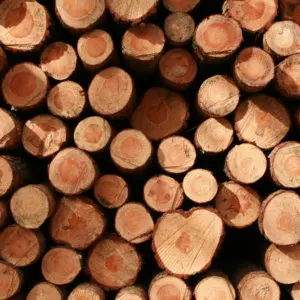It is essential to understand the nature of wood to protect it effectively. Nowadays, we choose wood because it’s beautiful to look at and it’s a sustainable material. It is warmer than bricks and metal but it requires a little more care. If we want to preserve its natural beauty, a small amount of maintenance is necessary and a few simple principles should be followed. To maintain wood properly we need to understand its origins, its nature and its biological structure. This is something that varies greatly from one species to another!
What type of wood do I have?
Wood is composed mainly of cellulose and water and each species has different amounts of other organic materials (e.g. tannins, resins, natural oils). It is for this reason that they don’t have the same capabilities for resisting the effects of weathering. If the correct process for protecting the wood is not followed from the beginning then it can be very costly and time-consuming to repair in the future.
The main types of wood are:
- Hardwood – e.g. oak, chestnut, beech, walnut (found in Europe)
- Softwood (generally resinous or coniferous) – e.g. pine, fir, spruce, larch, red cedar (found in Europe and North America)
- Tropical or Exotic – e.g. iroko, teak, niangon, sipo, ipe, angelica, meranti, bangkirai (found in Africa, Asia and South America)
What is damaging my wood?
Wood products have some natural enemies which need to be protected against. They fall into the following categories:
- Rots and fungus – the wood blackens in appearance, decomposes and breaks into pieces (very often due to a high level of humidity)
- Insects (termites, beetles and other insects) – these can dig holes and bore tunnels into the wood
- Natural deformation – caused generally by sunlight (UV, heat), climate (water, frost) and environmental pollution – in this case the wood darkens, deforms, cracks and splits
Do I really need to protect my wood?
Some species are advertised as being very durable but with so many risks it’s necessary to distinguish the two main types:
- Natural resistance against wood-eating insects and fungus. This exists in certain species and these would be considered durable or rot proof (see our guide to wood species used in Europe for specific information for each type of wood). A durable wood does not usually require pressure treatment. The tropical woods and certain species like the Red Cedar are included in this category.
- Natural resistance against deformation. This is much rarer and depends on the species of wood and also on its season of cutting, its degree of humidity and the nature of the soil! In the tree itself, the sapwood (young wood nearer the outside) is richer in nutrients than the heartwood (older wood in the centre) whose cells are filled with tannins and resins. Therefore the wood will have more or less natural protection once cut, depending on the structure and the concentration of protective agents. However, if no protection is provided, all the water soluble compounds will be washed out in the rain and sun so that the resistance of the wood will disappear progressively.
So to put it simply, yes you do need to protect your wood – even if certain woods do not require preservative treatment against rot and insects, all of them, after a certain length of time, need a protective treatment for maintaining their stability and preventing deformation.
Which wood treatment do I need?
There are many different types of treatment for wood, and we will explain in more detail which treatments are right for each job in the rest of the Wood Care Series. The many different products on the market can be sorted into the following types:
Preservative Treatments
These treatments create pressure-treated or core-treated wood and they are meant for non-durable species, protecting them against bluestain, insects and fungus but not against darkening. They are preventative and curative and consist of dipping, injection or steaming.
Protective Treatments
- Waterproofing – (generally based on wax or silicone) these form just a superficial film, after their application the water forms drops on the surface. They are quickly decomposed by UV rays and washed out by weathering.
- Varnishes – (mixtures of natural or synthetic resins and solvents) these preserve the visibility of the grain and the natural colour of the wood but unfortunately form films with low stability and are prone to flaking.
- Surface-coatings – these attempt to provide both protection and decoration and are usually available as transparent, semi-transparent and opaque products.
- Oils for Teak – (mixtures of natural and/or synthetic oils, solvents, driers and fungicides) these are often wrongly called ‘teak oils’ and are technically advanced and stable products offering short term protection.
- Saturators for wood – (a colourless solution) these are coloured and colourless products for protection and decoration both for interior and exterior woods. In order to be effective they should be capable of penetrating the wood and saturating it to provide stability. In order to provide durable strength, they should enter the wood and not remain on the surface. The advantage of these treatments is that they do not form films so they do not flake or peel off, making them easy to maintain.
We hope you found this post on should I treat and protect my wood? interesting. If you have any other advice or top tips, please feel free to leave them in the comments below. We love hearing from you!
You can also follow us on Twitter, Facebook, Instagram or Pinterest at @OwatrolUK or find us under the hashtag #OwatrolUK






